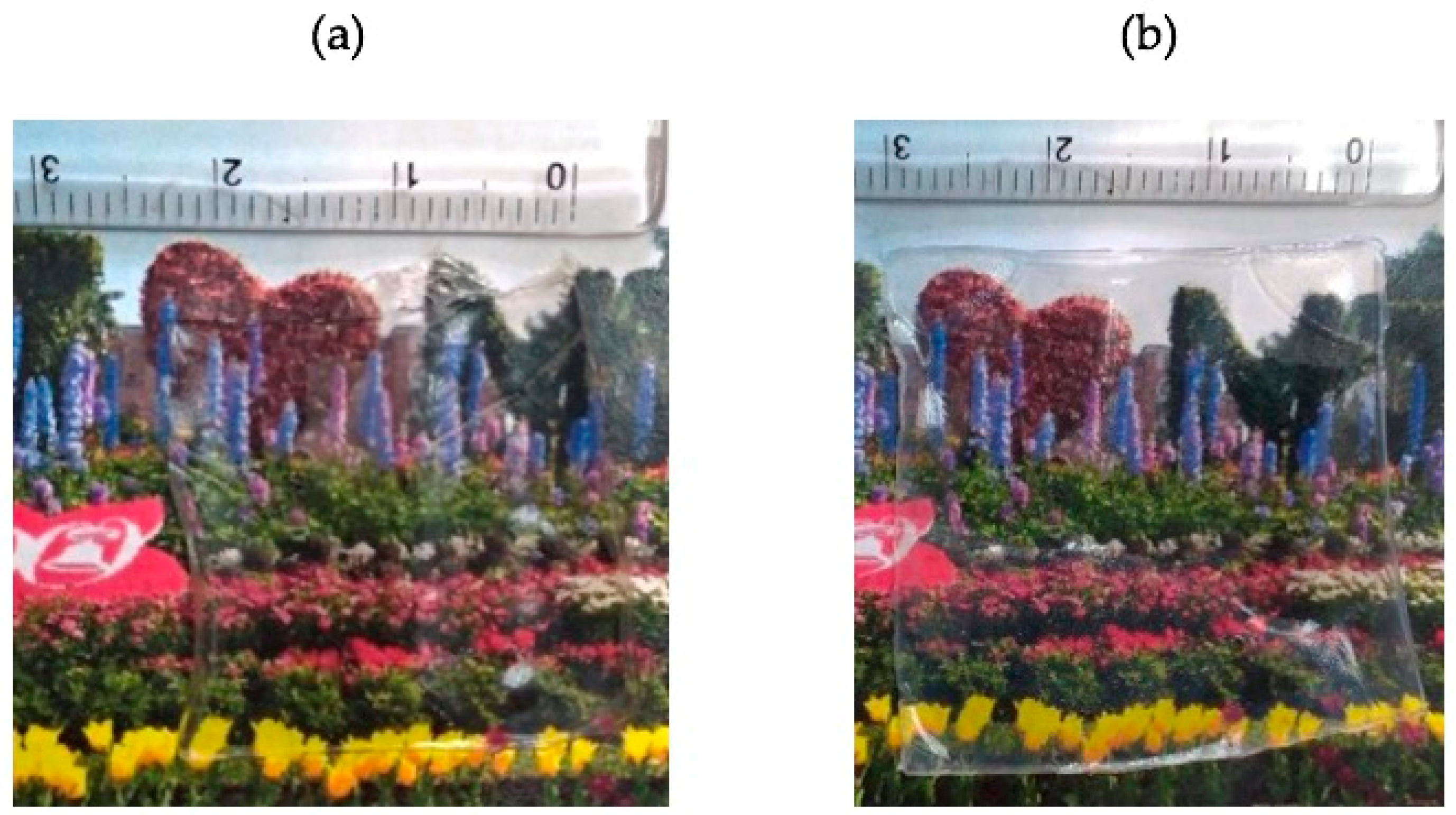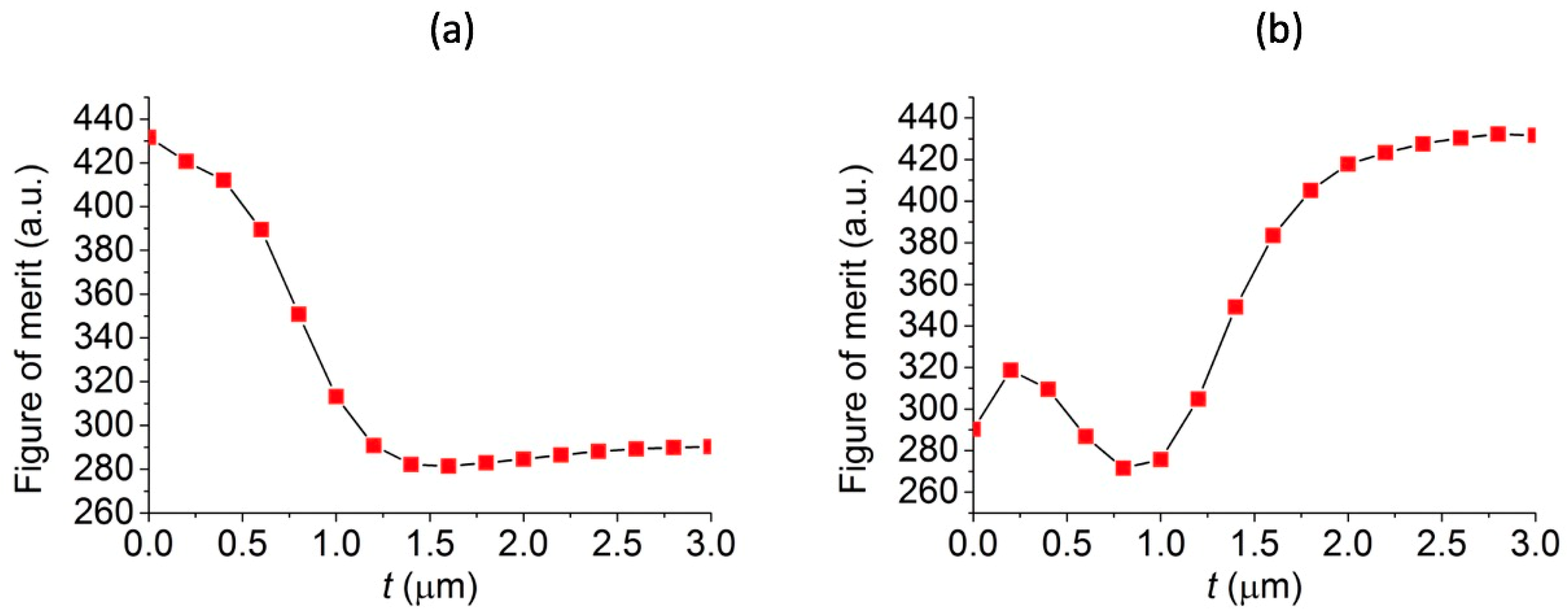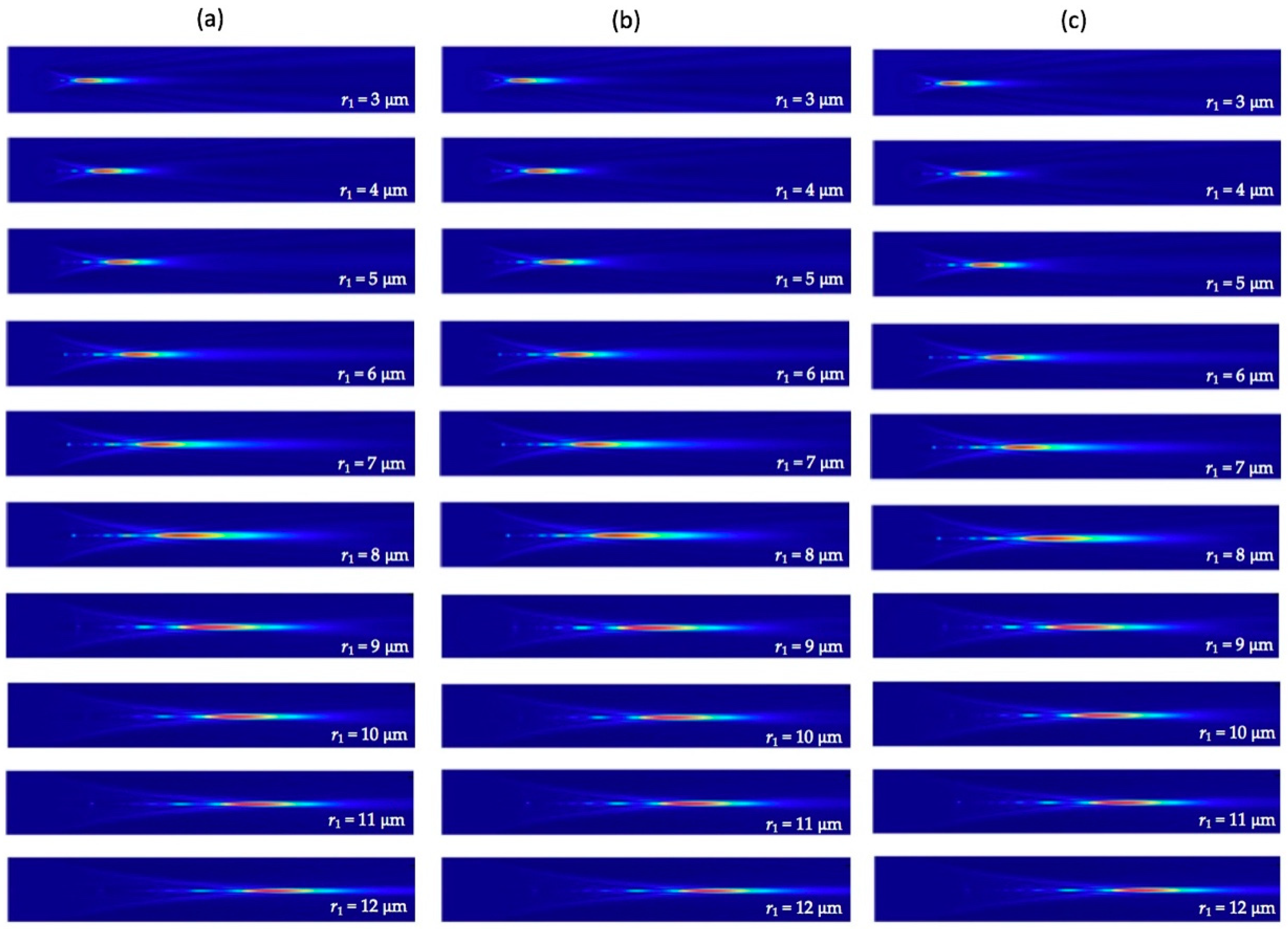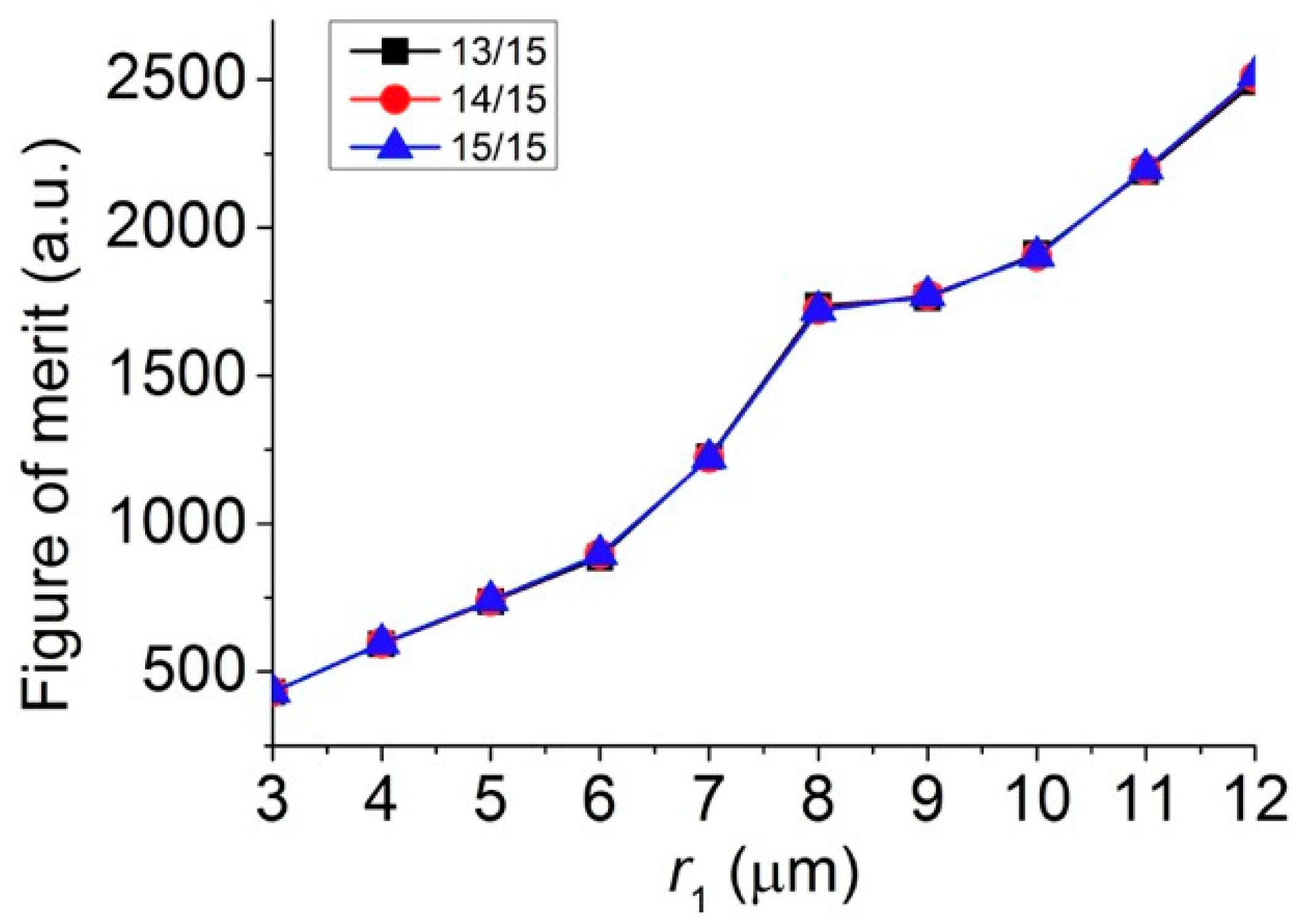Numerical Study of Tunable Photonic Nanojets Generated by Biocompatible Hydrogel Core-Shell Microspheres for Surface-Enhanced Raman Scattering Applications
Abstract
:1. Introduction
2. Methodology
3. Results and Discussion
3.1. Effects of the Thickness of the Shell of Core-shell Microspheres on Photonic Nanojets
3.2. Effects of Size of Core-Shell Microspheres on Photonic Nanojets
3.3. Effects of Surrounding Medium on Photonic Nanojets
3.4. Enhancements of SERS Signals by Core-Shell Microspheres
4. Conclusions
Author Contributions
Funding
Acknowledgments
Conflicts of Interest
References
- Deng, Y.; Qi, D.; Deng, C.; Zhang, X.; Zhao, D. Superparamagnetic high-magnetization microspheres with an Fe3O4@ SiO2 core and perpendicularly aligned mesoporous SiO2 shell for removal of microcystins. J. Am. Chem. Soc. 2008, 130, 28–29. [Google Scholar] [CrossRef] [PubMed]
- Shao, M.; Ning, F.; Zhao, J.; Wei, M.; Evans, D.G.; Duan, X. Preparation of Fe3O4@ SiO2@ layered double hydroxide core–shell microspheres for magnetic separation of proteins. J. Am. Chem. Soc. 2012, 134, 1071–1077. [Google Scholar] [CrossRef] [PubMed]
- Deng, Y.; Deng, C.; Qi, D.; Liu, C.; Liu, J.; Zhang, X.; Zhao, D. Synthesis of core/shell colloidal magnetic zeolite microspheres for the immobilization of trypsin. Adv. Mater. 2009, 21, 1377–1382. [Google Scholar] [CrossRef]
- Shao, M.; Ning, F.; Zhao, Y.; Zhao, J.; Wei, M.; Evans, D.G.; Duan, X. Core–shell layered double hydroxide microspheres with tunable interior architecture for supercapacitors. Chem. Mater. 2012, 24, 1192–1197. [Google Scholar] [CrossRef]
- Bontempi, N.; Vassalini, I.; Alessandri, I. All-dielectric core/shell resonators: From plasmon-free SERS to multimodal analysis. J. Raman Spectrosc. 2018, 49, 943–953. [Google Scholar] [CrossRef]
- Chen, Z.; Taflove, A.; Backman, V. Photonic nanojet enhancement of backscattering of light by nanoparticles: A potential novel visible-light ultramicroscopy technique. Opt. Express 2004, 12, 1214–1220. [Google Scholar] [CrossRef] [PubMed]
- Darafsheh, A.; Bollinger, D. Systematic study of the characteristics of the photonic nanojets formed by dielectric microcylinders. Opt. Commun. 2017, 402, 270–275. [Google Scholar] [CrossRef]
- Li, X.; Chen, Z.; Taflove, A.; Backman, V. Optical analysis of nanoparticles via enhanced backscattering facilitated by 3-D photonic nanojets. Opt. Express 2005, 13, 526–533. [Google Scholar] [CrossRef] [PubMed]
- Luk’Yanchuk, B.S.; Wang, Z.B.; Song, W.D.; Hong, M.H. Particle on surface: 3D-effects in dry laser cleaning. Appl. Phys. A 2004, 79, 747–751. [Google Scholar] [CrossRef]
- Liu, C.-Y.; Chang, L.-J. Photonic nanojet modulation by elliptical microcylinders. Opt.-Int. J. Light Electron Opt. 2014, 125, 4043–4046. [Google Scholar] [CrossRef] [Green Version]
- Han, L.; Han, Y.; Gouesbet, G.; Wang, J.; Gréhan, G. Photonic jet generated by spheroidal particle with Gaussian-beam illumination. JOSA B 2014, 31, 1476–1483. [Google Scholar] [CrossRef]
- Pacheco-Peña, V.; Beruete, M.; Minin, I.V.; Minin, O.V. Terajets produced by dielectric cuboids. Appl. Phys. Lett. 2014, 105, 084102. [Google Scholar] [CrossRef] [Green Version]
- Geints, Y.E.; Zemlyanov, A.A.; Panina, E.K. Microaxicon-generated photonic nanojets. JOSA B 2015, 32, 1570–1574. [Google Scholar] [CrossRef]
- Minin, I.V.; Minin, O.V.; Geints, Y.E. Localized EM and photonic jets from non-spherical and non-symmetrical dielectric mesoscale objects: Brief review. Ann. Phys. 2015, 527, 491–497. [Google Scholar] [CrossRef] [Green Version]
- McCloskey, D.; Wang, J.J.; Donegan, J.F. Low divergence photonic nanojets from Si 3 N 4 microdisks. Opt. Express 2012, 20, 128–140. [Google Scholar] [CrossRef] [PubMed]
- Mahariq, I.; Giden, I.H.; Kurt, H.; Minin, O.V.; Minin, I.V. Strong electromagnetic field localization near the surface of hemicylindrical particles. Opt. Quantum Electron. 2017, 49, 423. [Google Scholar] [CrossRef]
- Zhang, B.; Hao, J.; Shen, Z.; Wu, H.; Zhu, K.; Xu, J.; Ding, J. Ultralong photonic nanojet formed by dielectric microtoroid structure. Appl. Opt. 2018, 57, 8331–8337. [Google Scholar] [CrossRef] [PubMed]
- Kong, S.-C.; Taflove, A.; Backman, V. Quasi one-dimensional light beam generated by a graded-index microsphere. Opt. Express 2009, 17, 3722–3731. [Google Scholar] [CrossRef] [PubMed]
- Grojo, D.; Sandeau, N.; Boarino, L.; Constantinescu, C.; De Leo, N.; Laus, M.; Sparnacci, K. Bessel-like photonic nanojets from core-shell sub-wavelength spheres. Opt. Lett. 2014, 39, 3989–3992. [Google Scholar] [CrossRef] [PubMed]
- Wu, P.; Li, J.; Wei, K.; Yue, W. Tunable and ultra-elongated photonic nanojet generated by a liquid-immersed core–shell dielectric microsphere. Appl. Phys. Express 2015, 8, 112001. [Google Scholar] [CrossRef]
- Soh, J.H.; Wu, M.; Gu, G.; Chen, L.; Hong, M. Temperature-controlled photonic nanojet via VO 2 coating. Appl. Opt. 2016, 55, 3751–3756. [Google Scholar] [CrossRef] [PubMed]
- Wang, Z.; Guo, W.; Li, L.; Luk’yanchuk, B.S.; Khan, A.; Liu, Z.; Chen, Z.; Hong, M. Optical virtual imaging at 50 nm lateral resolution with a white-light nanoscope. Nat. Commun. 2011, 2, 218. [Google Scholar] [CrossRef] [PubMed] [Green Version]
- Chen, Z.; Taflove, A.; Backman, V. Highly efficient optical coupling and transport phenomena in chains of dielectric microspheres. Opt. Lett. 2006, 31, 389–391. [Google Scholar] [CrossRef] [PubMed]
- Yi, K.J.; Wang, H.; Lu, Y.F.; Yang, Z.Y. Enhanced Raman scattering by self-assembled silica spherical microparticles. J. Appl. Phys. 2007, 101, 063528. [Google Scholar] [CrossRef] [Green Version]
- Yan, Y.; Xing, C.; Jia, Y.; Zeng, Y.; Zhao, Y.; Jiang, Y. Self-assembled dielectric microsphere array enhanced Raman scattering for large-area and ultra-long working distance confocal detection. Opt. Express 2015, 23, 25854–25865. [Google Scholar] [CrossRef] [PubMed]
- Das, G.M.; Laha, R.; Dantham, V.R. Photonic nanojet-mediated SERS technique for enhancing the Raman scattering of a few molecules. J. Raman Spectrosc. 2016, 47, 895–900. [Google Scholar] [CrossRef]
- Arya, A.; Laha, R.; Das, G.M.; Dantham, V.R. Enhancement of R aman scattering signal using photonic nanojet of portable and reusable single microstructures. J. Raman Spectrosc. 2018, 49, 897–902. [Google Scholar] [CrossRef]
- Huang, S.H.; Jiang, X.; Peng, B.; Janisch, C.; Cocking, A.; Özdemir, Ş.K.; Liu, Z.; Yang, L. Surface-enhanced Raman scattering on dielectric microspheres with whispering gallery mode resonance. Photonics Res. 2018, 6, 346–356. [Google Scholar] [CrossRef]
- Das, G.M.; Dantham, V.R. Enhancement of SERS signal of single/few molecules using photonic nanojet of a dielectric microsphere. In AIP Conference Proceedings; AIP Publishing: Melville, NY, USA, 1953; p. 060019. [Google Scholar]
- Mcleod, E.; Arnold, C.B. Subwavelength direct-write nanopatterning using optically trapped microspheres. Nat. Nanotechnol. 2008, 3, 413. [Google Scholar] [CrossRef] [PubMed]
- Li, Y.-C.; Xin, H.-B.; Lei, H.-X.; Liu, L.-L.; Li, Y.-Z.; Zhang, Y.; Li, B.-J. Manipulation and detection of single nanoparticles and biomolecules by a photonic nanojet. Light Sci. Appl. 2016, 5, e16176. [Google Scholar] [CrossRef] [PubMed] [Green Version]
- Chen, Z.; Taflove, A.; Li, X.; Backman, V. Superenhanced backscattering of light by nanoparticles. Opt. Lett. 2006, 31, 196–198. [Google Scholar] [CrossRef] [PubMed]
- Kong, S.-C.; Sahakian, A.; Taflove, A.; Backman, V. Photonic nanojet-enabled optical data storage. Opt. Express 2008, 16, 13713–13719. [Google Scholar] [CrossRef] [PubMed]
- Cui, X.; Erni, D.; Hafner, C. Optical forces on metallic nanoparticles induced by a photonic nanojet. Opt. Express 2008, 16, 13560–13568. [Google Scholar] [CrossRef] [PubMed]
- Upputuri, P.K.; Wen, Z.-B.; Wu, Z.; Pramanik, M. Super-resolution photoacoustic microscopy using photonic nanojets: A simulation study. J. Biomed. Opt. 2014, 19, 116003. [Google Scholar] [CrossRef] [PubMed]
- Astratov, V.N.; Darafsheh, A.; Kerr, M.D.; Allen, K.W.; Fried, N.M.; Antoszyk, A.N.; Ying, H.S. Photonic nanojets for laser surgery. SPIE Newsroom 2010, 12, 32–34. [Google Scholar] [CrossRef]
- Gérard, D.; Wenger, J.; Devilez, A.; Gachet, D.; Stout, B.; Bonod, N.; Popov, E.; Rigneault, H. Strong electromagnetic confinement near dielectric microspheres to enhance single-molecule fluorescence. Opt. Express 2008, 16, 15297–15303. [Google Scholar] [CrossRef] [PubMed]
- Liu, C.-Y. Superenhanced photonic nanojet by core-shell microcylinders. Phys. Lett. A 2012, 376, 1856–1860. [Google Scholar] [CrossRef]
- Gu, G.; Zhou, R.; Chen, Z.; Xu, H.; Cai, G.; Cai, Z.; Hong, M. Super-long photonic nanojet generated from liquid-filled hollow microcylinder. Opt. Lett. 2015, 40, 625–628. [Google Scholar] [CrossRef] [PubMed]
- Liu, Y.; Liu, X.; Li, L.; Chen, W.; Chen, Y.; Huang, Y.; Xie, Z. Characteristics of photonic nanojets from two-layer dielectric hemisphere. Chin. Phys. B 2017, 26, 114201. [Google Scholar] [CrossRef]
- Liu, C.-Y.; Yen, T.-P.; Minin, O.V.; Minin, I.V. Engineering photonic nanojet by a graded-index micro-cuboid. Phys. E Low-Dimens. Syst. Nanostruct. 2018, 98, 105–110. [Google Scholar] [CrossRef]
- Sechriest, V.F.; Miao, Y.J.; Niyibizi, C.; Westerhausen–Larson, A.; Matthew, H.W.; Evans, C.H.; Fu, F.H.; Suh, J.K. GAG-augmented polysaccharide hydrogel: A novel biocompatible and biodegradable material to support chondrogenesis. J. Biomed. Mater. Res. 2000, 49, 534–541. [Google Scholar] [CrossRef]
- Nguyen, K.T.; West, J.L. Photopolymerizable hydrogels for tissue engineering applications. Biomaterials 2002, 23, 4307–4314. [Google Scholar] [CrossRef]
- Lee, Y.-P.; Liu, H.-Y.; Lin, P.-C.; Lee, Y.-H.; Yu, L.-R.; Hsieh, C.-C.; Shih, P.-J.; Shih, W.-P.; Wang, I.-J.; Yen, J.-Y.; et al. Facile fabrication of superporous and biocompatible hydrogel scaffolds for artificial corneal periphery. Colloids Surf. B Biointerfaces 2019, 175, 26–35. [Google Scholar] [CrossRef] [PubMed]
- Luk’yanchuk, B.S.; Paniagua-Domínguez, R.; Minin, I.; Minin, O.; Wang, Z. Refractive index less than two: Photonic nanojets yesterday, today and tomorrow. Opt. Mater. Express 2017, 7, 1820–1847. [Google Scholar] [CrossRef]
- Münzer, H.J.; Mosbacher, M.; Bertsch, M.; Zimmermann, J.; Leiderer, P.; Boneberg, J. Local field enhancement effects for nanostructuring of surfaces. J. Microsc. 2001, 202, 129–135. [Google Scholar] [CrossRef] [PubMed] [Green Version]
- Zhang, X.; Shah, N.C.; Van Duyne, R.P. Sensitive and selective chem/bio sensing based on surface-enhanced Raman spectroscopy (SERS). Vib. Spectrosc. 2006, 42, 2–8. [Google Scholar] [CrossRef]
- Luo, S.-C.; Sivashanmugan, K.; Liao, J.-D.; Yao, C.-K.; Peng, H.-C. Nanofabricated SERS-active substrates for single-molecule to virus detection in vitro: A review. Biosens. Bioelectron. 2014, 61, 232–240. [Google Scholar] [CrossRef] [PubMed]
- Cheng, H.-H.; Chen, S.-W.; Chang, Y.-Y.; Chu, J.-Y.; Lin, D.-Z.; Chen, Y.-P.; Li, J.-H. Effects of the tip shape on the localized field enhancement and far field radiation pattern of the plasmonic inverted pyramidal nanostructures with the tips for surface-enhanced Raman scattering. Opt. Express 2011, 19, 22125–22141. [Google Scholar] [CrossRef] [PubMed]
- Palik, E.D. Handbook of Optical Constants of Solids; Academic Press: Cambridge, MA, USA, 1998; Volume 3. [Google Scholar]
- Johnson, P.B.; Christy, R.-W. Optical constants of the noble metals. Phys. Rev. B 1972, 6, 4370. [Google Scholar] [CrossRef]
- Luemerical FDTD Solutions. Available online: http://www.lumerical.com (accessed on 14 February 2019).
- Skehan, C.; Ai, B.; Larson, S.R.; Stone, K.M.; Dennis, W.M.; Zhao, Y. Plasmonic and SERS performances of compound nanohole arrays fabricated by shadow sphere lithography. Nanotechnology 2018, 29, 095301. [Google Scholar] [CrossRef] [PubMed] [Green Version]












| Medium | Intensity | FOM | |||
|---|---|---|---|---|---|
| water | 38.87 | 14.47 | 13.36 | 1.307 | 430.4 |
| air | 147.55 | 1.76 | 1.03 | 0.734 | 353.8 |
© 2019 by the authors. Licensee MDPI, Basel, Switzerland. This article is an open access article distributed under the terms and conditions of the Creative Commons Attribution (CC BY) license (http://creativecommons.org/licenses/by/4.0/).
Share and Cite
Wang, Y.-J.; Dai, C.-A.; Li, J.-H. Numerical Study of Tunable Photonic Nanojets Generated by Biocompatible Hydrogel Core-Shell Microspheres for Surface-Enhanced Raman Scattering Applications. Polymers 2019, 11, 431. https://doi.org/10.3390/polym11030431
Wang Y-J, Dai C-A, Li J-H. Numerical Study of Tunable Photonic Nanojets Generated by Biocompatible Hydrogel Core-Shell Microspheres for Surface-Enhanced Raman Scattering Applications. Polymers. 2019; 11(3):431. https://doi.org/10.3390/polym11030431
Chicago/Turabian StyleWang, Yu-Jui, Chi-An Dai, and Jia-Han Li. 2019. "Numerical Study of Tunable Photonic Nanojets Generated by Biocompatible Hydrogel Core-Shell Microspheres for Surface-Enhanced Raman Scattering Applications" Polymers 11, no. 3: 431. https://doi.org/10.3390/polym11030431





